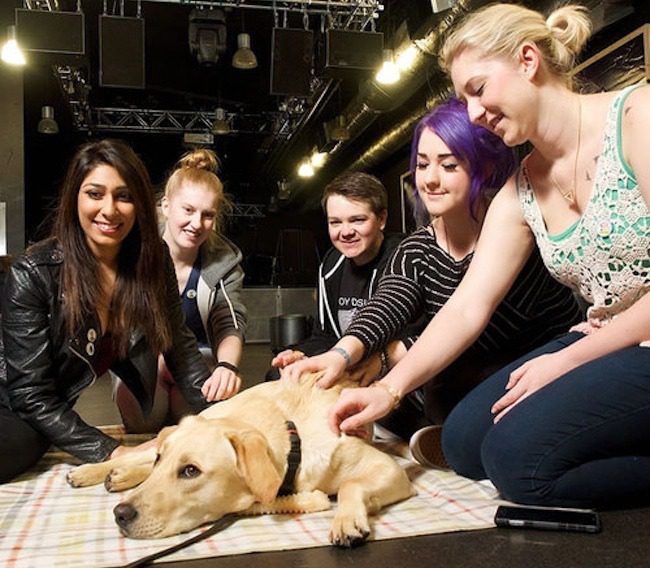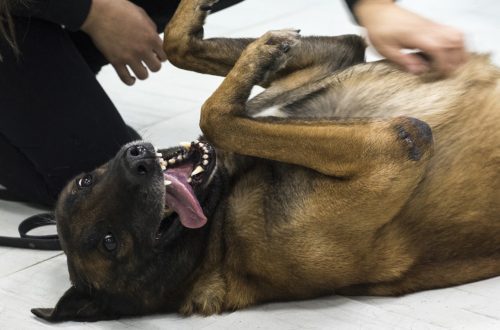
Puppy Rooms: Stress Relief for College Students
In some countries, campuses are taking steps to combat the stress of taking exams and being away from home by young people by opening small, lively corners for their students to interact with puppies. A 2014 survey by the National College Student Health Survey found that nearly one in six college students were diagnosed with or treated for anxiety disorders while studying. Not only do young people live away from their parents (and many for the first time in their lives), they are also separated from siblings, friends and pets. Moving to a college or university dorm has a big impact on students, and some of them may have difficulty forming new bonds. Not to mention the stress associated directly with studies, exams, extracurricular activities and financial problems.
In order to alleviate this condition, pet rooms are being set up on campuses in some countries, where students can relieve stress by interacting with dogs in a safe environment. Some schools offer this option all year round, while others partner with local organizations that bring dogs to campus during the session, the busiest time for students.
Dog-friendly rooms have other benefits as well. A study conducted by researchers at the University of Hiroshima in Japan showed that people who were shown pictures of puppies or kittens began to show higher levels of concentration. After taking a break to view such photos, productivity increased by 44%! If just looking at pictures of puppies helps people focus better on the task at hand, then what about the impact of face-to-face interaction with dogs on student learning?
Contents
Colleges and Universities Commit to Reducing Stress in Students with Puppies
Kent State University claims to be the first US public university to offer a pet therapy program. The Dogs on Campus program was launched in 2004 and is still regularly held on campus today.
The University of Connecticut’s Paws to Relax program allows students to visit therapy dogs during a session. The best part is that these “fluffy” sessions are held in the library. I wonder if they are allowed to bark?
The University of Iowa also tries to help relieve stress during exam sessions. One of his many activities in this regard is the organization of breaks in study for communication with dogs twice a year at the end of each session.
Students can visit the university library not only to borrow a book, they can also interact with animals for a while. The Yale Law Library regularly “leases out” therapy dogs. The program began with Monty the now “retired” dog, but according to the local Yale Daily News, they have found a replacement: the library pup, Pippin. In addition, the Yale Medical Library now has not one, but two dogs, both named Finn.
The University of California at Berkeley believes that college students experience stress not only twice a year during the session. The Pet Hugs program, in partnership with Save the Animals, brings dogs to campus each month to socialize with students.
But the University of Minnesota broke all records. Like the University of California at Berkeley, this university understands the need for students to regularly interact with dogs. His PAWS (Pet Away Worry and Stress) program provides an opportunity for people to interact with animals on a weekly basis in three different locations. This means that every week students are given three different opportunities to spend time in a pet corner. The best part is that not only students can get their weekly dose of dog interaction: these rooms are open to the general public, so other residents of the city who do not have pets, can also come and relax in the company of four-legged friends.
Benefits of having dogs on campus
All of these universities offer puppy rooms as an alternative way to relieve stress. According to their data, students participating in the program not only have reduced stress levels, but also generally feel better. As students improve their mood and concentration levels due to such programs, students also experience higher exam scores. Programs provide the student with all the benefits of interacting with a dog without the added responsibility of caring for a pet, at an already high level of workload. The advantage here is not only that students have the opportunity to reduce their stress levels, but also that universities that recruit dogs from local therapy training programs provide additional training that helps dogs pass their certification.
Never underestimate the impact a pet can have on your mood. Parents whose children are in college should pay attention to how their child interacts with pets when they come home for the holidays. It may be worth letting your dog spend a week with your son or daughter at college, if it’s not forbidden, to give them extra time to bond and help out during a difficult time.





